Ruth Bader Ginsburg becomes first woman to lie in state in US capitol
- Published
How Ruth Bader Ginsburg personally shaped our lives
Justice Ruth Bader Ginsburg, who died a week ago, has become the first woman in US history to lie in state at the US Capitol in Washington DC.
The liberal icon died from pancreatic cancer after 27 years on the nation's top court.
Thousands have been paying their respects as she lay in repose outside the Supreme Court building this week.
Ginsburg, who died aged 87, was an outspoken advocate for gender equality and civil rights.
She has been mythologised by liberals and feminists as a barrier-breaking leader.
Dubbed by her fans as the Notorious RBG, she also became the first justice to have two days of viewing at the Supreme Court.
Given the sheer number of visitors coming to pay their respects, organisers determined one day would not be enough.

Lawmakers watched as Ginsburg's coffin arrived at the US Capitol
Makeshift memorials lined the court steps as the lines of those attending Ginsburg's public viewings snaked around the National Mall. Her casket was kept outside the Supreme Court earlier this week to allow for outdoor visitation in light of Covid-19.
The formal ceremony - in which she is lying in state at the US Congress - is invite-only, also due to the pandemic. It is being attended by senior elected officials. Democratic presidential nominee Joe Biden and his wife are also present.
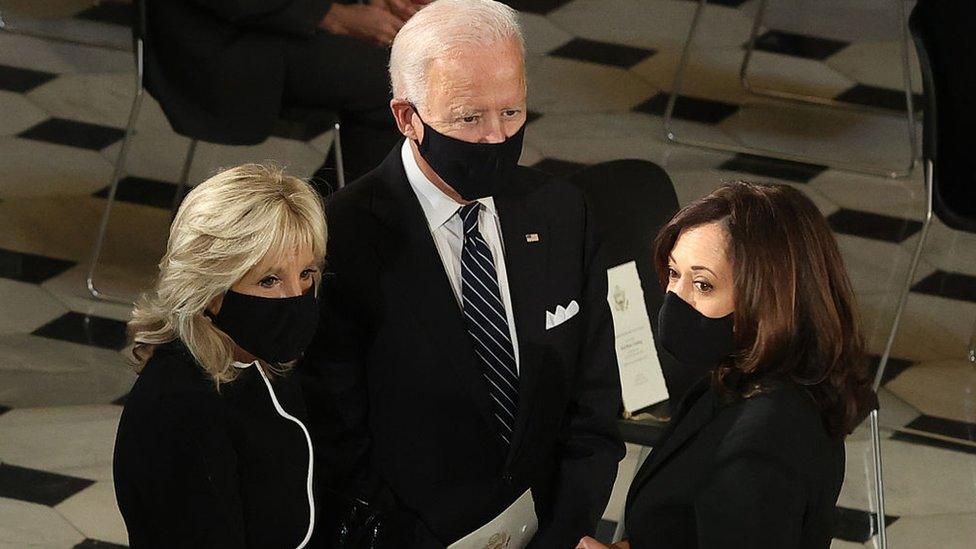
Mr Biden, his wife Jill and running mate Kamala Harris (right)
As her casket arrived in Congress on Friday, Speaker of the House Nancy Pelosi called it her "high honour" to welcome the late justice as the first US woman to lie in state there.
Rabbi Lauren Holtzblatt, who eulogised Ginsburg as she lay in state, recited a prayer in Hebrew - not often heard in the halls of Congress.
In addition to being the first woman, Ginsburg is also the first Jewish American to ever lie in state at the US Congress.
She will be buried next week in another private ceremony at Arlington National Cemetery.
Her death has sparked a row between President Trump's Republicans, who wish to nominate a replacement, and opposition Democrats, who say whoever wins the 3 November election should have that right. Back in 2016, Republicans blocked then-President Barack Obama's top court nominee, arguing that the decision should be made outside of an election year.
Naming justices to the nation's top court is contentious as court is the final say in major issues. Recent rulings have included abortion rights, immigration, healthcare and same-sex marriage.

Gloom amid a partisan battle

The politics of Justice Ginsburg's death have left the capital in turmoil. The short and simple ceremony as she lay in state was a pause to remember the life and legacy of a towering liberal icon, punctuated by the opera music that she loved.
The main speaker and family friend, Rabbi Lauren Holtzblatt, praised Justice Ginsburg's dogged pursuit of justice in the face of many obstacles and urged "we the people" to carry on that legacy. But the overcast sky and the spare guest list dictated by Covid-19 restrictions reflected the gloom of the times.
And there were quiet reminders of the partisan battle taking shape over Justice Ginsburg's expected conservative replacement, which will shift the Supreme Court to the right.
The event was held in the National Statuary Hall on the side of Congress that the Democrats control. The Republican leaders of the House and Senate were invited but declined to attend.
Rabbi Holtzblatt hinted at the epic political and cultural battles to come. Justice Ginsburg's fervent hope was to "preserve the integrity of the court," she said.

What does it mean to lie in state?
In short, lying in state is when the caskets of prominent government officials are displayed inside the US Capitol or other government buildings.
The first person given the honour was Henry Clay in 1852, a Kentucky Senator who died during his term. Since then, the 33 men who have lain in state at the US Capitol have all been high-profile statesmen, like President Abraham Lincoln, or military members.
Ginsburg is now the first woman and only the second justice from the top court to be given the honour. The first was William Howard Taft, who was also a US president.
Ruth Bader Ginsburg's personal trainer honours her with push-ups
Who else has lain in state?
Civil rights leader John Lewis, who served as the Democratic Congressman from Georgia until his death this July, was the last individual to lie in state.
Congressman Elijah Cummings in 2019 became the first African-American lawmaker to do so.
Another civil rights icon and African-American woman, Rosa Parks, received a similar tribute when she died in 2005. She lay "in honour" in the Capitol Rotunda - a different term for private citizens.
Hundreds of people visited the US Supreme Court to pay their respects to the late justice
Who was Justice Ginsburg?
Ginsburg joined the Supreme Court in 1993, after her nomination by President Bill Clinton. She was the second woman ever confirmed to the bench.
Among Ginsburg's most significant, early cases was United States v Virginia, which struck down the men-only admissions policy at the Virginia Military Institute.
During her 27-year tenure on the bench, she moved noticeably to the left, serving as a counterbalance to the increasingly conservative-leaning court.
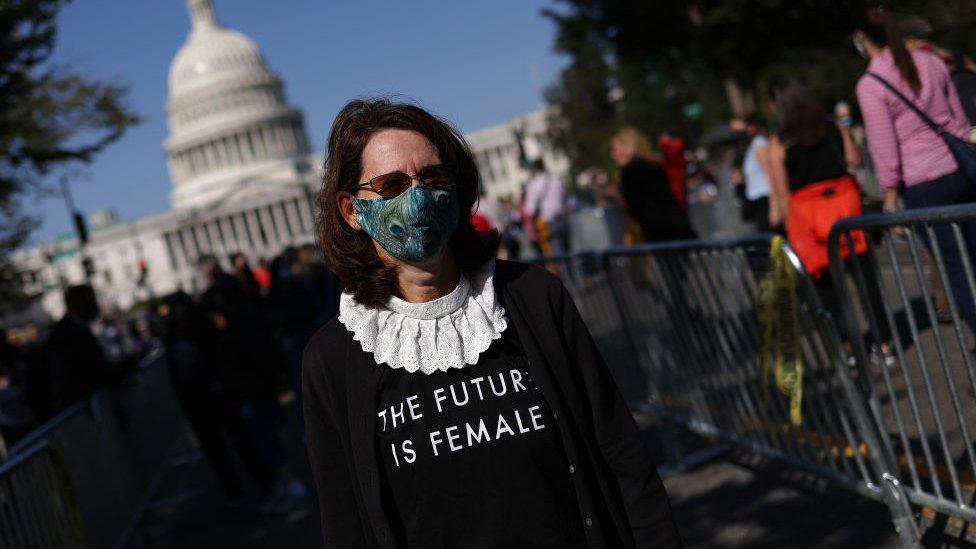
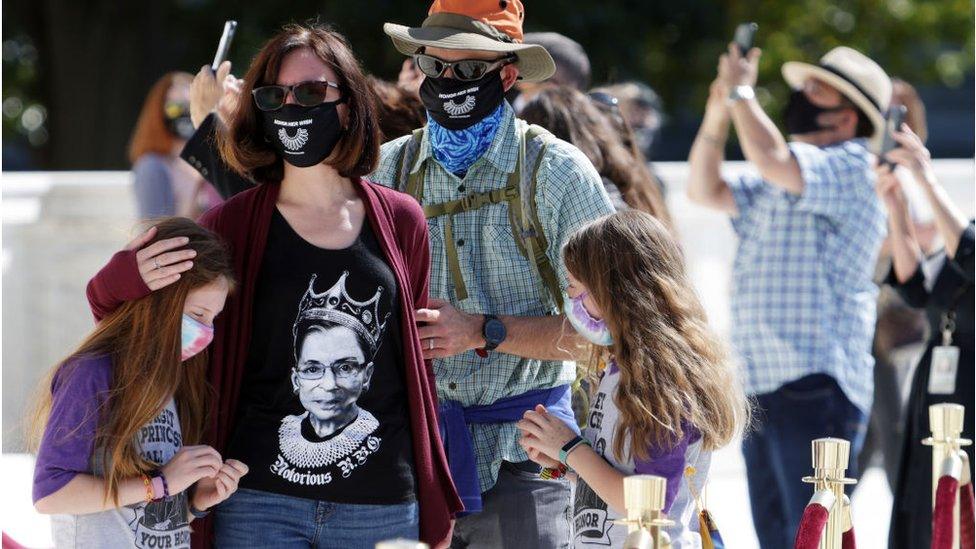
She was known for her forceful - occasionally biting - dissents. Ginsburg did not shy away from criticising her colleagues' opinions.
"Justice Ginsburg's dissents were not cries of defeat. They were blueprints for the future," Rabbi Holtzblatt said in her eulogy.
In 2015, Ginsburg sided with the majority on two landmark cases - both massive victories for American progressives. She was one of six justices to uphold a crucial component of the 2010 Affordable Care Act, commonly known as Obamacare. In the second, Obergefell v Hodges, she sided with the 5-4 majority, legalising same-sex marriage in all 50 states.
- Published21 September 2020
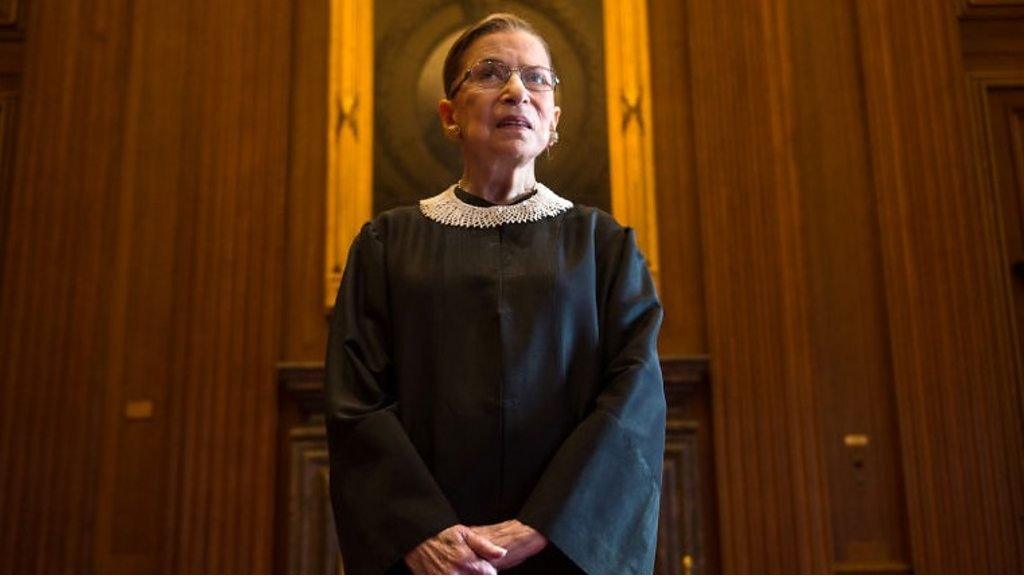
- Published19 September 2020
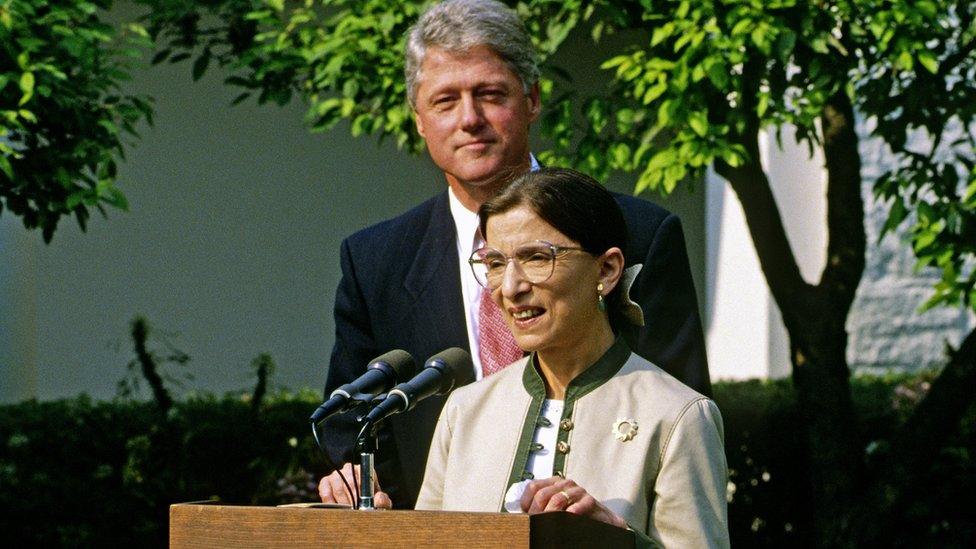
- Published21 September 2020

- Published16 June 2015
